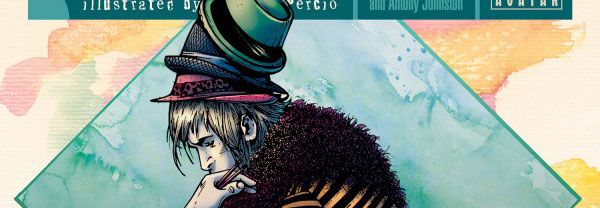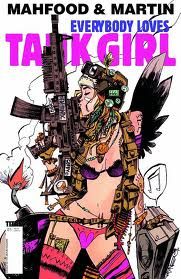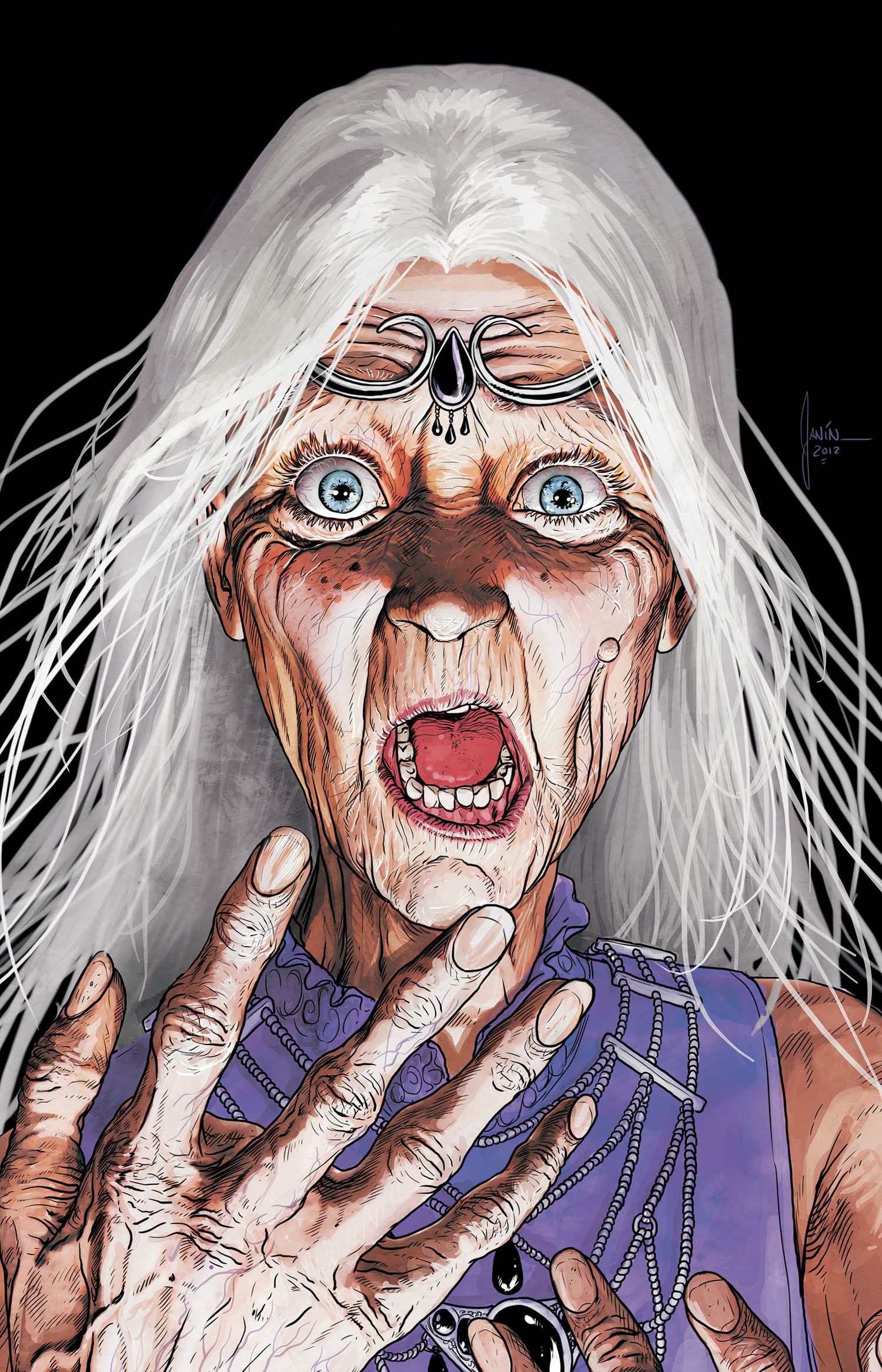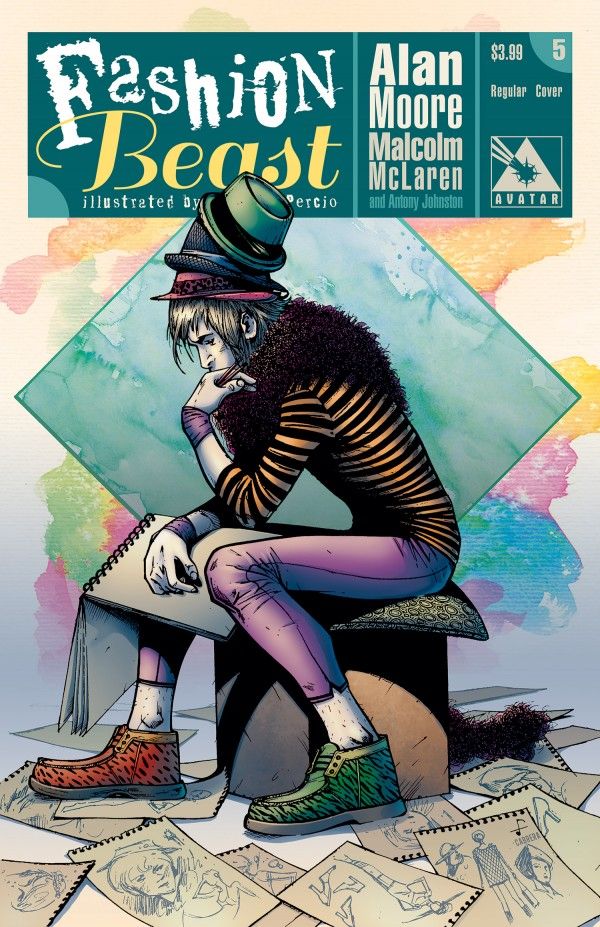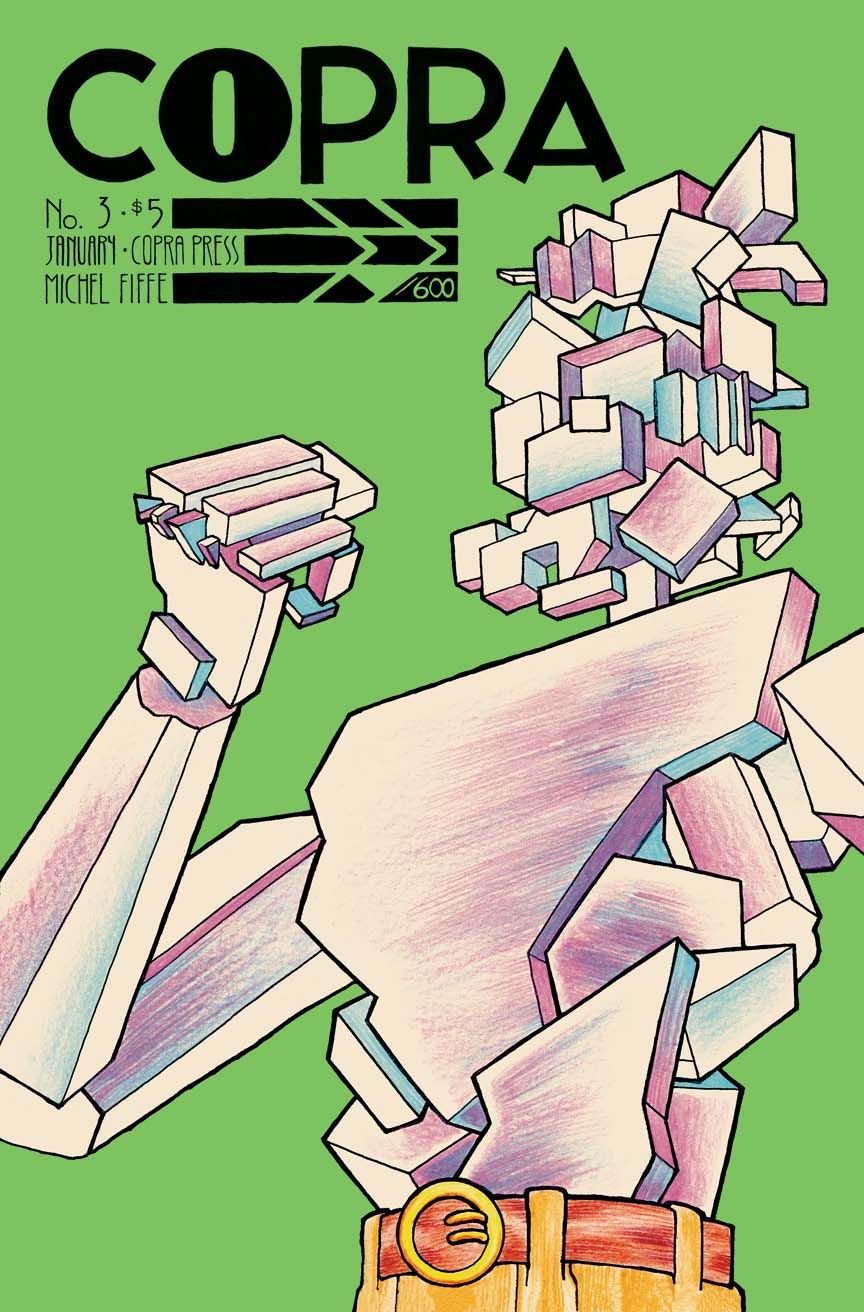Hello and welcome to What Are You Reading?, where we reveal our picks for the best Super Bowl ads ... er, where we talk about what we've been reading lately. Today our special guest is Sonia Harris, who writes a weekly column - Committed - for Comics Should Be Good, and is a graphic designer on books such as Butcher Baker the Righteous Maker (collected in hardcover now from Image Comics) and upcoming comic books SEX (beginning March) and The Bounce. (beginning May).
To see what Sonia and the Robot 6 crew have been reading, click below.
*****
Michael May
I'm seriously not looking for new series to start. I've been adding new comics like crazy for a few months now and I really have to start weeding some out. I just don't have time to keep up anymore. But before I realized that, I had my eye on Mike Norton and Dennis Hopeless' The Answer as something that looked fun. There's a puzzle-loving librarian who gets in over her head with a (presumably) evil motivational speaker and a masked crime-fighter with an exclamation point on his face. It sounded great, but even as I was opening the first issue I was prepared to make it also my last. Who needs another superhero comic?
Turns out, if I'm going to whittle down my pull list, the cut's going to have to be somewhere besides The Answer. I knew I'd enjoy Norton's art, but Hopeless' story is as addictive as the puzzles its main character loves so much. Everything is a mystery in the first issue, but it's so action-packed that none of it feels like set-up. Can't put it down yet.
I also read Kelly Sue DeConnick's first three issues on Avengers Assemble (#9-11) with Stefano Caselli. DeConnick has a great sense of humor that comes through in her writing, both as banter and just in the situations she creates for these characters. Like the bet between Tony Stark and Bruce Banner to see which can more quickly lead a team to find a missing scientist. Or the way Spider-Woman proves that her pheromone power works even on the Hulk. It's an amusing, relatively angst-free comic and I'm back for at least the next two issues as DeConnick and Pete Woods work with Spider-Woman, Black Widow, and Hawkeye. I'll probably use Age of Ultron (and the new writer) as a jump-off point, but I intend to enjoy myself with Assemble for another couple of months at least.
Mark Kardwell
I read a review copy of Alan Martin and Jim Mahfood's Everybody Loves Tank Girl. Loved it, natch. It was originally produced for the French publisher Label 619, so I did wonder if Martin deliberately ramped up the surrealism and non sequiteurs for the land of Marcel Duchamp and André Breton? Probably not.
J. Caleb Mozzocco
Huh. Feels like I hardly read any comics at all this week, which is probably a good thing, as it means I must have been doing more writing than reading this week (That, or I took a lot more naps than usual).
I didn't make it to my local comic shop this week—sometimes it's not worth even a relatively short drive if you're only picking up two or three books—so the only new comic book-comic I read on Wednesday was the print version of Injustice: Gods Among Us #1, which I already discussed here at Robot 6.
I liked it a lot more than I expected to, even though I imagine it's going to get less and less fun when they get to the the JLA-as-UFC stuff the video game its based on promises.
The only other comic of note that I recall reading since the last time we published one of these round-ups was a trade collection of 2008 series Young Avengers Presents, which I discussed at my usual too-great length over at my home blog, Every Day Is Like Wednesday.
I enjoyed Kieron Gillen, Jamie McKelvie, Mike Norton and company's Young Avengers #1 enough to make a concerted effort to catch up on all the Young Avengers comics I had missed (which, it turns out, was most of them). This one was a six-issue 2008 series, with each issue featuring a different member of the team by a different creative team.
It's only about four years old, but it was remarkable how much the Marvel Universe had changed around the characters. In fact, that's what most struck me about the comic. It was so rooted in the monthly goings-on of the Marvel Universe at the time, with non-registered superheroics illegal, Captain America temporarily "dead," "Captain Marvel" temporarily "alive" and so on, that I might as well have been reading a Marvel collection from 1997 or '82 or '79.
That particular collection is probably most notable at this point for its final issue, in which Matt Fraction writes a meeting between Hawkeye Kate Bishop and Hawkeye Clint Barton (who was still going by "Ronin" at that point), and, a few months into Fraction and company's acclaimed Hawkeye monthly, it seems like a sort of practice pilot episode or something.
Tom Bondurant
It feels strange to say that a book populated with ex-Vertigo characters does so well with classic superhero storytelling, but Justice League Dark #16 (written by Jeff Lemire and Ray Fawkes, drawn by Mikel Janin) was a pretty good super-team issue. And yes, I know that most of these characters were part of the superhero line before Vertigo's creation twenty years ago, but still. John Constantine, Madame Xanadu, Frankenstein, Deadman, and Black Orchid are fighting the techno-villain Epoch in a land where magic doesn't work that well and all their usual character traits are thrown out of whack. (This hits Constantine extra-hard, with results both amusing and horrifying.) Meanwhile, Zatanna and Tim Hunter hear Tim's secret origin. The issue has a good balance between fights and exposition, the stakes keep getting higher, and the issue ends on a we're-all-doomed note. Now, just confirm for me (unless I've missed something) that Epoch is functionally the same guy Grant Morrison used in JLA/WildCATS (who used to be the Lord of Time) and I'll be that much happier.
By the way, with Constantine also appearing in this week's I, Vampire #16, as well as the Amethyst story in last week's Sword Of Sorcery #4, the new Constantine series feels marginally less like an opportunistic way to end a long-running title, and marginally more like a natural outgrowth of the guy's ubiquity.
One quick note about Superior Spider-Man #2: after reading issue #1 I thought there was no way the Big Secret could be preserved inviolate for too long, and I am glad to see that at least one person is a little suspicious. However, I remember those early days of the "Battlestar Galactica" reboot when Baltar's role as a Cylon collaborator was always on the verge of being found out, only to be "saved" at the last minute by some plot mechanism. That was one of the more frustrating aspects of the new "Galactica," and I hope SSM isn't similarly frustrating.
Finally, it's not comics, but I decided to pull Diane Duane's first Star Trek novel, The Wounded Sky, out of storage. (By coincidence, 2013 is the book's 30th anniversary.) The Enterprise is testing a new kind of FTL drive when the Klingons attack, and the ship's escape has them jumping all the way outside of our galaxy. Getting home isn't exactly the problem, but the drive's effects on the fabric of the universe is. The ending gets metaphysical (literally) and even a little Wrinkle In Time-ish, but it's an engaging story and Duane had a good way of both capturing and expanding the feel of Star Trek. Like some other Trek novelists, she went on to write a few issues of DC's Trek comic, but ironically her comics work -- while consistently enjoyable -- wasn't nearly as epic as her prose.
Brigid Alverson
I had already read many of the comics in Darryl Cunningham's How to Fake a Moon Landing on his website, but it's handy to have them all bundled together in one place. The book contains eight case studies of bad science or, in some cases, bad science reporting. Cunningham starts with the conspiracy theory that the moon landing was faked and then goes on to homeopathy, chiropractics, global warming denial, and other topics. His comics are well researched and interesting, but the presentation is a bit flat. He sticks to six panels per page, although he does vary them a bit, and pretty much every panel contains a text box with a sentence or a single sentence fragment in the top. As a result, the book reads a bit like text interrupted by pictures. The pictures themselves don't always add to the story; sometimes they are simply of people talking, and Cunningham repeats images quite a bit, although usually to good effect. In the piece on chiropractics, for instance, he uses images of skeletons and spines to make his point. His piece on fracking was particularly informative, as he takes the opportunity to depict exactly how it works. Despite the text-heaviness, the comics are interesting and short enough that they don't get tedious.
Moving to the silly end of the spectrum, I picked up the Simpsons Comics Supernova this week. I am not a fan of the TV show--I never watch it--and I haven't read many of the comics, so I was surprised at how much I liked it. The writing is clever, although it seems like a lot of it would sail over a kid's head. The opening story is a sort of parody of Carl Barks's Scrooge McDuck stories, with Homer and the kids going on a treasure hunt with Homer's boss; there were a lot of Disney references woven into the story--the treasure island is called Donrosa Island, and on their way the travelers sail over the Gottfredson Trench, both references to Scrooge McDuck artists. Even if you don't get the allusions, though, the stories are fun and the art was good; I'll be reading more of these from now on.
Sonia Harris
Fashion Beast #5
I'm liking this, in a silly, light sort of way. It's Alan Moore, but it isn't changing my life or destroying my perception of reality like, which is fine, for once. I'm actually relieved that the name can still weave a strange tale without having to blow my head off. Still, I'm loving the whole dystopian future, complete with gender political confusion, work-based riots, and general fashion insanity. There is a plausibility that a more slick, typically American science fiction comic might not have. This issue chose to focus a little too closely on the personal squabble of the two main characters, which might have gone down a bit of a soap opera cul de sac, but also gave us some insight into the strange working of the Moore-esque head fashion designer. Like The Courtyard, this has been adapted from a story by Alan Moore, but this time he developed the story with Malcolm McLaren, which gives it this fabulously '80's punk rock aesthetic. I think Antony Johnston is the ideal person to pick that up and adapt it, he seems to have the correct feel for the scenarios, and Facundo Percio's art is beautifully detailed and stiffly fluid (an entertaining combination that he carries off extremely well.)
Pictures at a Revolution, Five Movies and the Birth of the New Hollywood, by Mark Harris
I picked this up nearly a year ago when I first moved to Los Angeles partly because I'm so interested in the pivotal era it describes, and partly because I wanted something that would give LA a little recent historical substance for me. I'm reading it ridiculously slowly because I keep putting it aside to read comic books and novels, but it is actually a rather engaging read for non-fiction. It describes a time when Hollywood was forced to change quite radically, overnight independent films like Bonnie and Clyde and The Graduate were hugely popular, and creators of unwieldy, big budget movies like Doctor Doolittle were left out in the cold. This book describes the making of these films in the context of an era, along with In the Heat of the Night and Guess Who's Coming to Dinner. While American moviegoers were changing, Hollywood wasn't always as quick on the uptake and this book explains how and why, and what the fallout from that was.
Copra #3
A wild, surreal, psychedelic superhero team fantasy. Each month it looks better and better. In my opinion, Michel Fiffe's books (this and also Zegas) embody a perfect contemporary approach to self-publishing. I don't know how profitable it is, or how labor intensive, but he's owning his own work, creating whatever he wants, and selling it on his own terms. There's no publisher, no editor, no stores, and no kickstarter. He's writing and drawing his own, completely unique and gorgeous books, getting them printed in full color on premium cover stock, and selling them on Etsy. Suddenly there are comic books which can embody every freedom that drew me into the indie scene as a teenager. The freedom he gives himself is used perfectly, to create something so different and beautiful that I'm happy to pay twice as much as for a disposable monthly "floppy" from one of the big two.
The Dark Knight Trilogy Screenplays
This is a book with all three screenplays for Nolan's Batman movies and also the storyboards of one scene for each film. I'll be honest with you, I'm not reading this right now, I'm looking at the storyboards. While they're sketchy and rough in style, as is the norm with storyboards, they are so detailed and incredibly accurate as to what was depicted in final shooting. I suppose it makes sense that someone would have to carefully plan out such elaborate stunts, but I'm extremely impressed that they're as close to the finished product as they are. Particularly the plane sequence which opens The Dark Knight Rises, it is such a wild ride sort of a feel that I thought there might be more play in the thing, but clearly there isn't. Shot for shot, it is all there in the storyboards.

